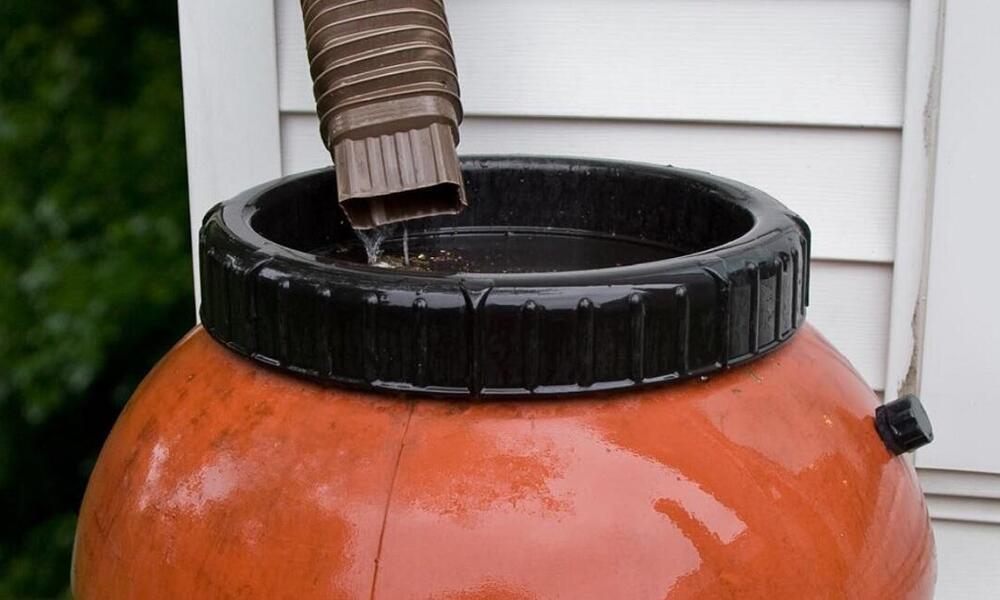
Saving Water and Money with Rain Barrels
- Date: 16 December 2013
- Author: Julia Fiala
Did you know that the average roof collects 600 gallons of water for every inch of rain? Capturing some of that stormwater could play an important role in protecting our freshwater resources. Rain barrels are one simple first step that can set small business owners, schools, homeowners, and corporations down the path of freshwater conservation.
Due to reasons such as environmental degradation, prolonged drought, and the rising price of municipal water, rain barrels have grown in popularity over the past several years as one of the simplest and most effective methods of helping our planet. Rain barrels can not only help save money on municipal water bills but they can also reduce erosion and flooding caused by turbulent stormwater runoff.

Rain barrel, courtesy EPA.
Stormwater pollution is a major environmental concern, especially for urban and suburban areas that are dominated by impervious surfaces such as paved roads, sidewalks, and parking lots. Impervious surfaces prevent water infiltration back into the ground, resulting in an increased likelihood of more frequent and more severe flooding. Stormwater pollution happens when chemicals and sediments get picked up by rushing rainwater and flow into a storm sewer system or a local body of water. Rain barrels reduce this pollution by capturing and containing rainwater, decreasing the total amount of runoff water. Less runoff means water can seep back into the ground slowly, reducing the amount of polluted water that runs into rivers and streams, which ultimately conserves bodies of water.
Collecting rainwater in barrels is a cheap and easy way to reduce stormwater runoff. Some other options for reducing runoff include green roofs, rain gardens, or installing permeable pavers in the place of tradition concrete. According to the EPA, rain barrels have the ability to save the average homeowner 1300 gallons of water, which is a lot of water that does not become runoff.
Rain barrels range in size from 30 gallon to 100 gallon containers and can be made of plastic or wood. They can be purchased or made by upcycling any large container capable of holding water. Installing them is easy and requires no special tools to set up at your business, home, or school. There are numerous tutorials and guidelines available online that can answer specific questions and provide creative ideas on how to decorate your barrel to make it visually attractive.
So what can you do with all this rainwater that collects in the barrels? Water your plants, water a composter, or wash your car to repurpose the water. If you’ve collected more water than you can use, just release it on a sunny day when the ground is dry and the water will be absorbed. Plants will love this water! Using this recovered water for landscaping helps conserve potable water and will result in money savings.

Rain barrels like this one capture stormwater that can be used around the home and garden. In this way, water will absorb slowly into the ground, helping to prevent flooding, stream erosion, and pollution. Courtesy Wendy Higbee.
Stormwater management is an important step in helping to reduce threats to freshwater systems. In the southeastern United States, WWF and The Coca-Cola Company worked together with local watershed groups on initiatives to help manage stormwater. This work included collaborating with local decision-makers on smart-growth strategies, constructing rain gardens and conducting rain barrel workshops with recycled syrup drums donated by Coca-Cola bottling partners. To date, Coca-Cola has donated more than 36,000 syrup drums in the United States and Canada with the capacity to collect 303 million liters of water – enough to fill 121 Olympic-sized swimming pools – each year.
Interested in learning more? Here are some more resources for corporations, businesses, and homeowners:
- Build Your Own Rain Barrel, Green America
- Can Rain Barrels and Gardens Help Keep Sewage in the Sewers?, EPA
- Water: After the Storm, EPA
Good luck with your rain barrel!